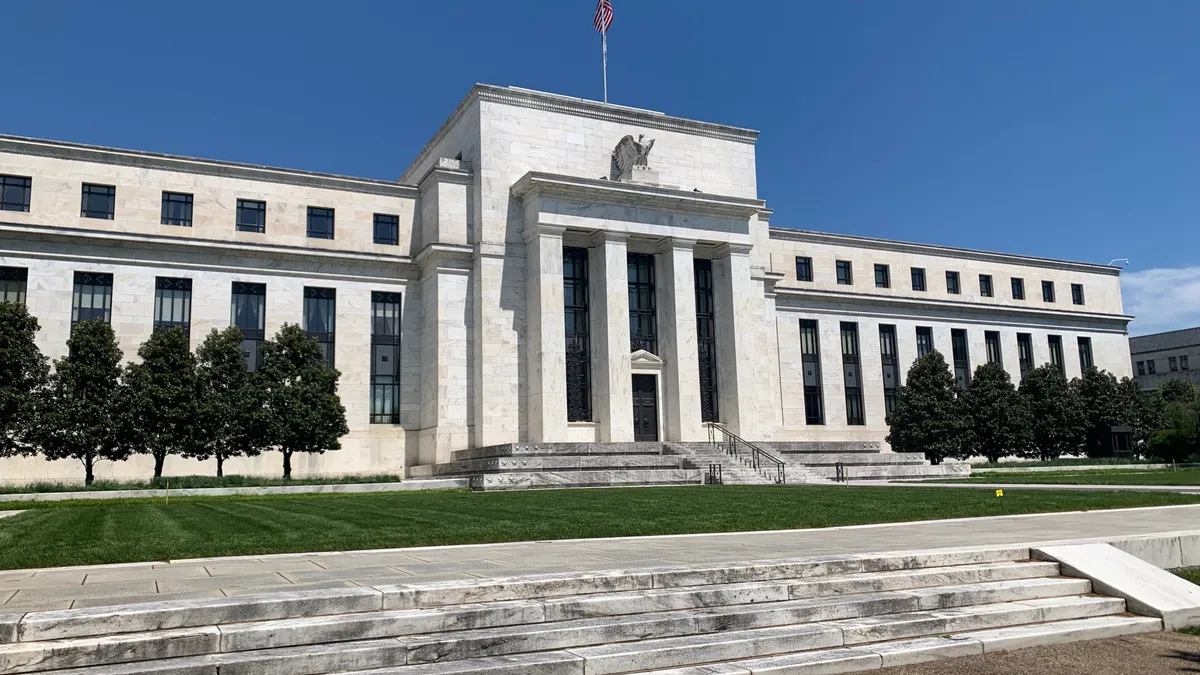Dive Brief:
- A central bank digital currency (CBDC), in combination with digital ledger technology (DLT) could make cross-border payments faster and safer, the New York Fed found last week in sharing the results of the first phase of research conducted in partnership with the Bank for International Settlements (BIS) Innovation Hub.
- Over a 12-week span, the New York Fed designed a wholesale CBDC prototype and connected it to a blockchain. It also simulated foreign exchange spot transactions with counterparts using similar ledgers and found the transactions cleared for both parties simultaneously — or not at all — within 10 seconds, on average.
- Those transactions typically take two days to settle — and during that time, the sender and the recipient each are “exposed to settlement, counterparty and credit risk,” according to the report. The currency and blockchain the researchers designed reduced or eliminated a number of risks, the New York Fed said.
Dive Insight:
The CBDC experiment, dubbed Project Cedar, marks the first team-up of the New York Fed’s research group and the BIS’s Innovation Hub — collectively, the New York Innovation Center (NYIC).
It isn’t, however, the Fed’s first foray into CBDC research. The Boston Fed partnered with the Massachusetts Institute of Technology (MIT) before the larger central bank issued a January draft paper laying out the pros and cons of issuing a CBDC.
While the Fed has not definitively committed to issuing a CBDC, not all of the central bank’s officials are convinced of its necessity. Fed Gov. Christopher Waller last month said he doubts a CBDC’s introduction would boost or harm the dollar’s position in the global economy.
"Safe and efficient cross-border payments are critical to the functioning of the global economy," Per von Zelowitz, director of the NYIC, said in a statement, adding that Phase I “revealed promising applications of blockchain technology in modernizing critical payments infrastructure.”
“Our inaugural experiment provides a strategic launch pad for further research and development regarding the future of money and payments from the U.S. perspective,” von Zelowitz said.
The NYIC’s prototype was accessible for 24 hours a day and 365 days a year. Under the current system, transactions can only be pushed during business hours. Throughput across the system increased when additional currencies were included, the study found.
The design is not the NYIC’s final choice or that of a potential U.S. CBDC, the report said.
Future research will focus on interoperability, security and ledger design, according to the report.
The report does not endorse any specific policy outcome and does not assume the Federal Reserve will make any decisions based on the findings. The New York Fed noted that Project Cedar is meant to add to the dialogue surrounding CBDCs.













